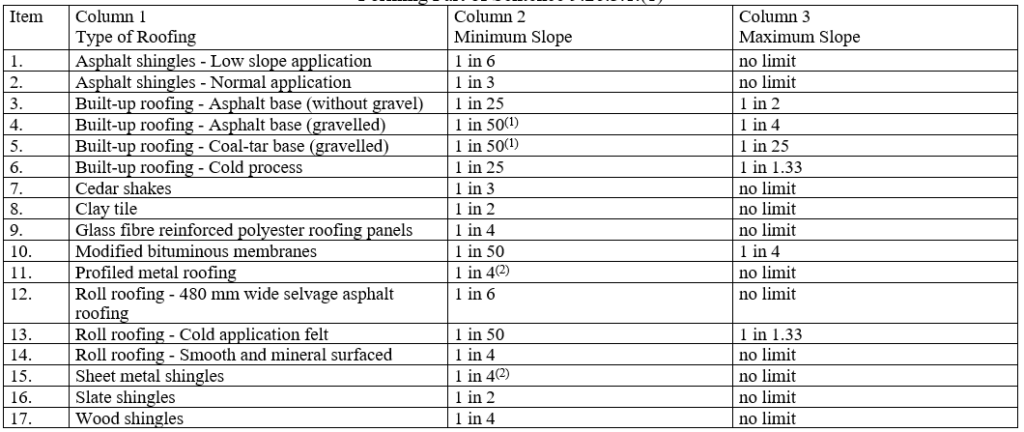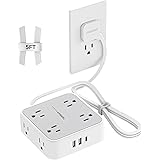Roofing Types and Slope Limits
Forming Part of Sentence 9.26.3.1.(1)
Table 9.26.3.1.

Notes to Table 9.26.3.1.:
(1) See Sentence 9.26.3.1.(2).
(2) See Sentence 9.26.3.1.(3).
Table 9.26.3.1. Ontario Regulation 332/12 Building Code, Information published by oncodes.ca for educational purposes only.
Asphalt Shingles on Slopes 1:3 or Greater
Asphalt strip shingles should be a minimum No. 210 grade. Square-butt strip shingles are usually 310 × 915 mm (12 × 36 in.) or 335 × 1 000 mm (131⁄4 × 39 3⁄8 in.) in size, have three tabs and should be laid with 130 mm (5 in.) or 145 mm (5¾ in.) of their width exposed to the weather. Since there are approximately 21 to 26 strips in a bundle, a bundle will cover about 3 m2 (32 sq. ft.).
Store bundles flat so that strips will not curl when the bundles are opened. Distribute the storage of shingles on roofs so that the load capacity of the framing is not exceeded.
The method for installing asphalt shingles is shown in Figure 101. Install the eave protection where required. Apply a starter strip comprised of shingles with their tabs removed along the eaves before the first course of shingles, so that it extends at least 12 mm (1⁄2 in.) beyond the eaves, rakes and fascia board to form a drip edge. Starter strips with metal drip edges can also be used.
This projection prevents water from backing up under the shingles by capillary action. Alternatively, a shingle strip laid with the tabs facing up the roof slope may be used for this purpose. Type M roll roofing may also be used as a starter strip and, when continued up the roof slope, will also serve as eave protection. Nail the starter strip along the bottom edge at 300 mm (12 in.) intervals. Lay the first course of shingles with the butt edge in line with the bottom of the starter strip.
Figure 101

Asphalt Shingles on Low Slopes of 1:6 to 1:3
Care is required to ensure that the roof covering on a low slope roof is waterproof. Except for the first two courses, use three thicknesses of shingles on the entire roof including hips and ridges. Maintain a shingle exposure of not more than one-third the full height of the shingle. Install starter strips as for higher sloped roofs, but apply them over a continuous band of cement not less than 200 mm (8 in.) wide. The first course of shingles is then cemented to the strip with a continuous band of cement that is 100 mm (4 in.) wider than the shingle exposure. For example, a 250 mm (10 in.) band of cement should be used when the shingle exposure is 150 mm (6 in.). The succeeding courses of shingles are laid on a band of cement 50 mm (2 in.) wider than the shingle exposure, so that a 200 mm (8 in.) band is used when the exposure is 150 mm (6 in.).
Source : Canada Mortgage and Housing Corporation (CMHC)





